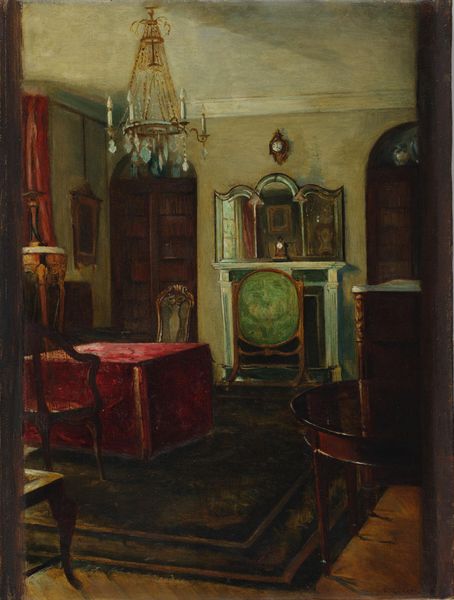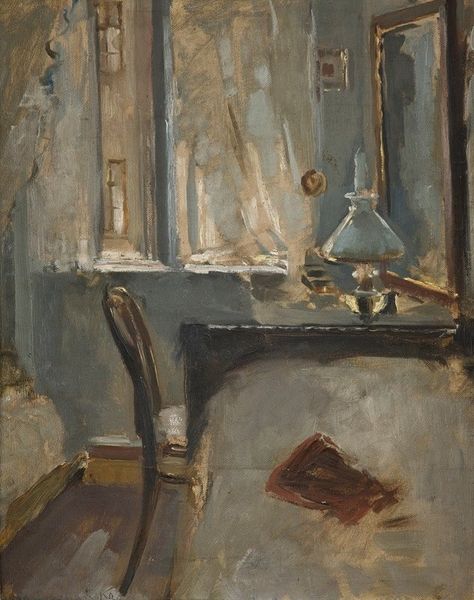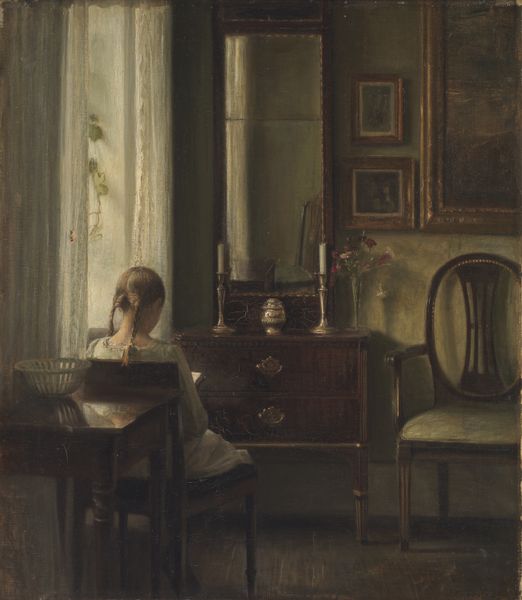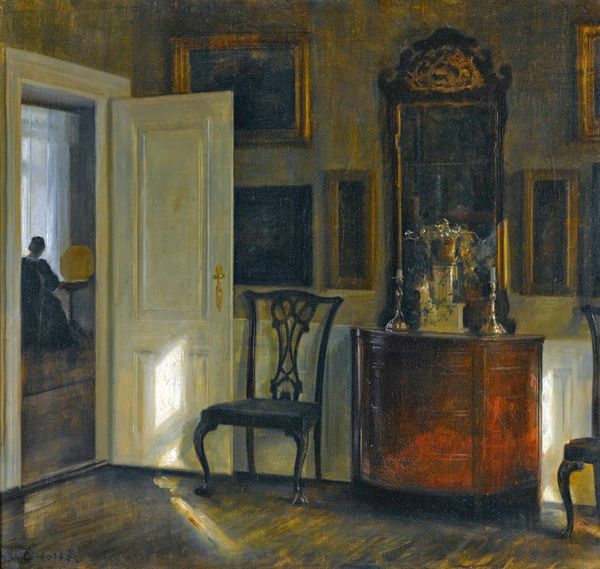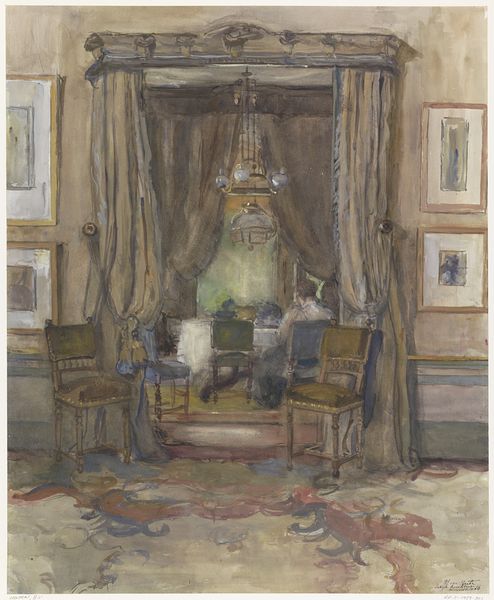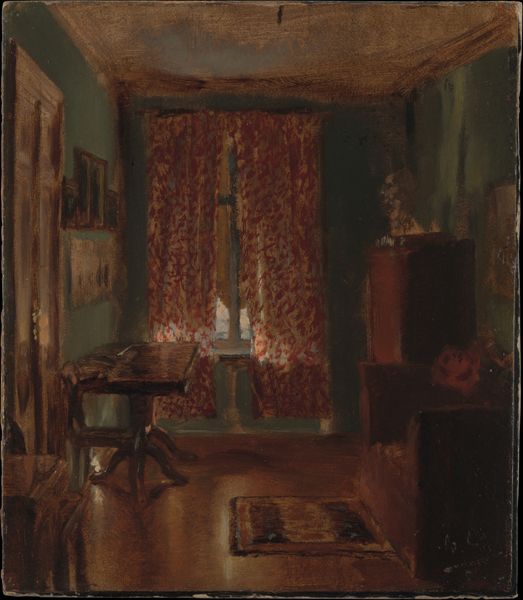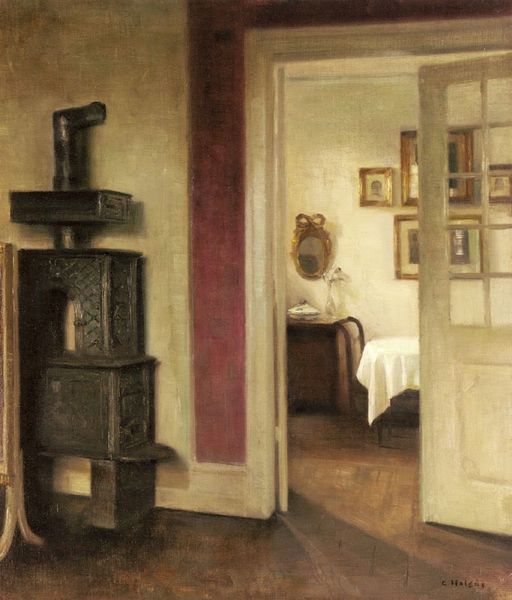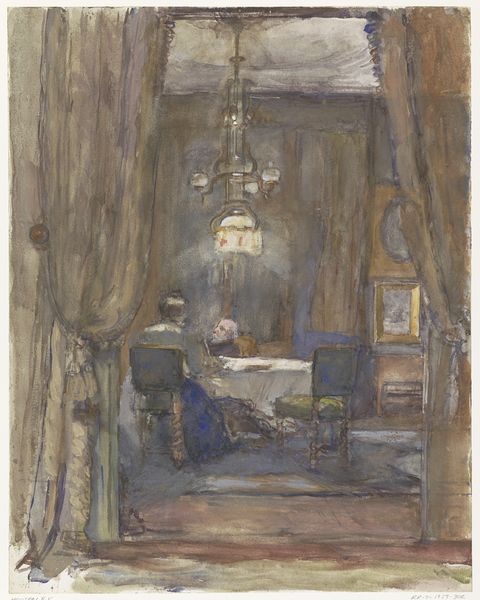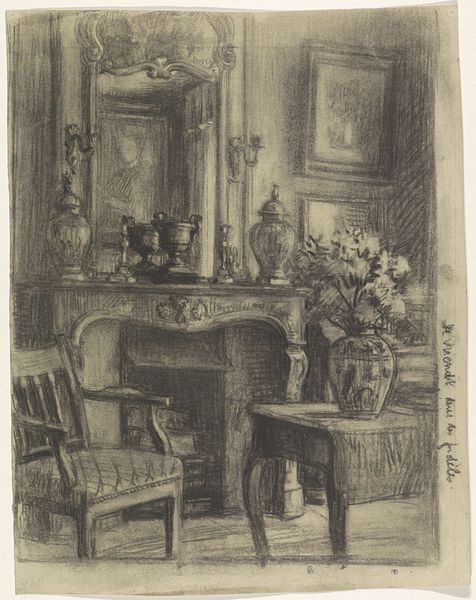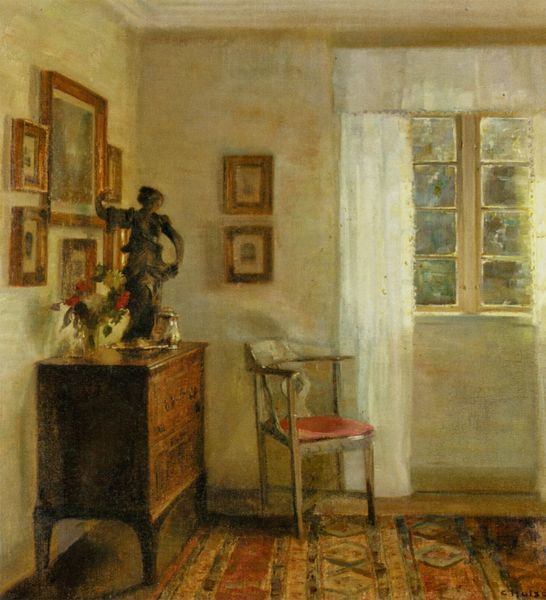
painting, oil-paint
#
painting
#
oil-paint
#
oil painting
#
intimism
Dimensions: 42.5 cm (height) x 38 cm (width) (Netto)
Curator: Here we have Peter Ilsted’s “Interiør med en samovar. Aften”, which translates to “Interior with a samovar. Evening,” completed in 1902. Ilsted was a Danish artist, part of the late 19th-century Danish Golden Age, and worked primarily with oil paints to create these intimate domestic scenes. Editor: My first impression is a sense of hushed stillness. The color palette is very restrained – browns and greys dominate – and there's a strong emphasis on the play of light and shadow. It feels like a very private moment captured. Curator: Indeed, Ilsted was part of the Intimist movement, which celebrated quiet, domestic life and interior spaces. Notice the arrangement of the objects on the table – the samovar, the delicate silver tea set. These items speak to a particular social class and their leisure activities, really marking a divergence from, or maybe a complement to, the bustling city scenes painted in France at the same time. Editor: It’s interesting how the arrangement speaks to the social dynamics of the era. Tea rituals were deeply ingrained in social etiquette, especially for women. This feels very deliberate, but maybe also excludes or marginalizes those without such resources, in other words, outside this inner world. It's a visual representation of domesticity and, possibly, social boundaries. Curator: Certainly. The collection of framed art pieces adorning the wall also tells us a great deal. It reflects the cultural interests and values of the inhabitants, a cultivated space where art and domestic life intertwined. These framed scenes serve almost like windows looking into this specific experience of leisure, refinement, and bourgeois values. Editor: Looking at this painting through a contemporary lens, I can’t help but also think about labor and gendered expectations. Who is maintaining this perfectly composed domestic sphere? It evokes conversations around care work and the unseen labor that often underpins such scenes of quiet beauty. Curator: Absolutely, a critical analysis brings those elements to light. In its time, this painting offered a comforting reflection of societal values, a celebration of home and hearth. It underscores the ways in which cultural values were reflected in art and in material possessions. Editor: And for us today, it gives the scene layers of complexity: beauty, privilege, silence, and hidden work. Thank you. Curator: It's a perfect testament to how one small snapshot encapsulates an entire network of sociopolitical concerns. Thanks!
Comments
No comments
Be the first to comment and join the conversation on the ultimate creative platform.
